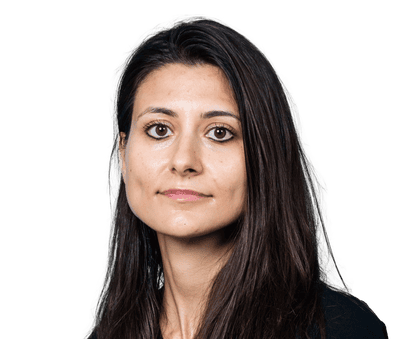- There's a good chance you were told ancient Egyptians pulled chunks of brains out through the nose.
- Experiments suggest there was a much easier way to do this: scrambling the brains, an expert said.
- It's likely embalmers used hooks to liquefy the brains and pour them out, he said.
Search This Blog
Thursday, December 29, 2022
Egypt from space: Satellite views of the pyramids, Nile, Cairo and Suez | Middle East Eye
--
Sent from my Linux system.
Young Sudanese archaeologists dig up history as ‘west knows best’ era ends | Sudan | The Guardian
Young Sudanese archaeologists dig up history as 'west knows best' era ends
On a continent that has long attracted western expeditions, a wave of young people are now exploring sites
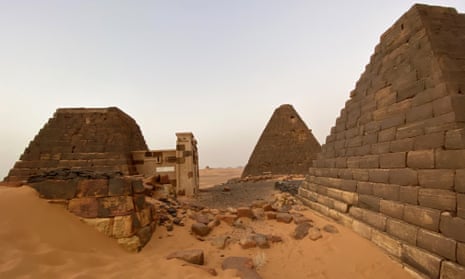
Tue 27 Dec 2022 07.35 EST
A late morning in Khartoum. Inside a low, dusty building in the centre of the Sudanese capital, there are crates of artefacts, a 7ft replica of a 2,000-year-old stone statue of a Nubian god, and students rushing through the corridors. Outside is noisy traffic, blinding sunlight and both branches of the Nile.
Heading down one staircase are Sabrine Jamal, Nadia Musa, Athar Bela and Sabrine al-Sadiq, all studying archaeology at Khartoum University. Not one of them is older than 24 and they see themselves as pioneers, breaking new ground on a continent that has long attracted western expeditions, specialists and adventurers but whose own archaeologists have received less attention overseas.
"It is very important that Africans do African archaeology … because then we will have our own archaeological cultures. There is a lot we understand because we are from here. The idea that people from the west know best is changing," said Sadiq.
Jamal, 22, from the remote and war-torn South Kordorfan province, said stereotypes promoted by films and literature in the west were out of date. "There is an idea of what an archaeologist looks like … But they should not have a certain image or colour or features or gender," she said.
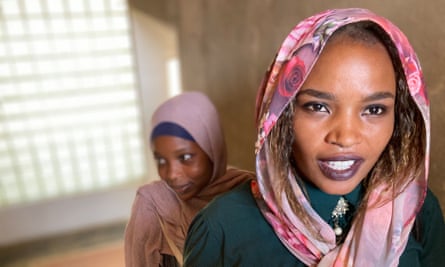
For decades, the popular image of archaeologists in Africa has been at odds with an increasingly diverse reality. Dr Ghalia Garelnabi, the acting director of Sudan's national museum, said that when she was at university 30 years ago there were only three women studying archaeology, and now there were 20.
"This is a very great change and an important one. There are more and more young women in Sudan who are interested to know about their history and they deserve to know this … Twelve years ago we had only foreign missions working here, but this is changing. Now we have many Sudanese missions digging at our sites," Garelnabi said.
Alex Vines, now director of the Africa Programme at Chatham House in London, was once an archaeologist in Zimbabwe and east Africa more than 30 years ago.
"Archaeology was dominated by western white archaeologists and has been completely transformed. It is now increasingly driven by indigenous research," he said.
Advocates of greater involvement by African archaeologists on the continent argue that this would help a discipline that has become "detached from reality".
"The cost of living, climate crisis, migration, reflecting on our identity … Archaeology can and should be speaking to all these things. We need to build something new, something that is equitable, richer and relevant," said Dr Sada Mire, a Swedish-Somali archaeologist who is currently an associate professor of heritage studies at University College London.
Mire recently helped to launch a two-year project in northern Kenya that has involved 35 people from local communities in the study of rock art. "These are people who have never thought about archaeology … They have a lot of knowledge we don't have and this just shows what people can do when they are not patronised or infantilised but just given the equipment and knowhow. It's a way of connecting two worlds," she said.
The link between imperialist exploitation of the continent and archaeological research was established as early as 1798 when Napoleon invaded Egypt accompanied by teams of French specialists set on understanding the country's past but also taking huge amounts of artefacts away.
Sudan was a British colony for nearly 60 years, and then run by a series of autocrats often beholden to external powers. Few paid much attention to archaeology. In such circumstances, western support was important in preserving what little activity continued.
Dr Eglal el-Malik, the director of the conservation department of Sudan's National Corporation of Antiquities and Museums, said she was grateful to foreign archaeologists who "never stopped coming even in our darkest times. This was a very big help for us. They truly helped Sudan in maintaining and sustaining our work, and helped build capacity for young archaeologists. We needed professionals. Now we have many."
A handful of Sudanese archaeologists have travelled recently to Europe to work on sites there, reversing a century-old flow in the other direction. "We are looking forward to the day when African archaeologists regularly travel to Europe or US to do archaeology there," Malik said.
This appeals to Sadiq, 24, who has never left Sudan. "We want to discover more and travel. I want to know more about my history but also all history. Why shouldn't we come and study your history in the west like you have done here? We could teach you something, perhaps," she said.

But the new wave of young archaeologists in Sudan and elsewhere on the continent face many obstacles. For women in particular, their choice of profession brings resistance from relatives and schools.
"For three years my family was opposed. There were all these questions: what are you doing with this qualification? Why be an archaeologist if you're a woman? How are you going to travel alone? But I was very determined," Jamal said.
Men also face prejudice and ignorance. Joshua Kumbani, 31, who has conducted groundbreaking work in southern Africa on prehistoric music-making, said he was often laughed at when he told people he was an archaeologist.
"They can't understand why I chose this profession. They think I work in the dirt with old things. Some even accuse me of being a grave digger. I have to explain this is not what archaeologists do," Kumbani said. "I think they get it from Indiana Jones and cinema. They don't have full information."
There is an acute shortage of resources. The Covid pandemic and current economic crisis has crippled governments across the continent. In Khartoum, classes are held in a 50-year-old building that gets constant power cuts in 40C-plus heat. Even in relatively wealthy countries such as South Africa, funding and facilities are often inadequate.
"The big challenge is scaling up. There is so much of Africas's heritage that has not yet been investigated and is now threatened by development and population growth," said Vines.
Malik has been at the forefront of a new push for artefacts looted during the colonial period to be returned, wherever practical, and sees the development of a cohort of young colleagues as important for Sudan. "We believe it is time that our history should be written from the point of view of the Sudanese, she said.
For Sadiq and her classmates in Khartoum, more is at stake than the task of investigation and discovery of past lives, however important that may be. A military coup last year dashed hopes of a swift transition to democracy after the fall of the veteran dictator Omar al-Bashir in 2019. Since then, more than 100 people have died in protests against the new regime, which has close relations with several repressive Gulf states and Russia.
"To be a free country, we need our own archaeologists," Sadiq said.
The year is 2033. Elon Musk is no longer one of the richest people in the world, having hemorrhaged away his fortune trying to make Twitter profitable. Which, alas, hasn't worked out too well: only 420 people are left on the platform. Everyone else was banned for not laughing at Musk's increasingly desperate jokes.
In other news, Pete Davidson is now dating Martha Stewart. An 86-year-old Donald Trump is still threatening to run for president. And British tabloids are still churning out 100 articles a day about whether Meghan Markle eating lunch is an outrageous snub to the royal family.
Obviously I have no idea what the world is going to look like in a decade. But here's one prediction I feel very confident making: without a free and fearless press the future will be bleak. Without independent journalism, democracy is doomed. Without journalists who hold power to account, the future will be entirely shaped by the whims and wants of the 1%.
A lot of the 1% are not big fans of the Guardian, by the way. Donald Trump once praised a Montana congressman who body-slammed a Guardian reporter. Musk, meanwhile, has described the Guardian, as "the most insufferable newspaper on planet Earth." I'm not sure there is any greater compliment.
I am proud to write for the Guardian. But ethics can be expensive. Not having a paywall means that the Guardian has to regularly ask our readers to chip in. If you are able, please do consider supporting us. Only with your help can we continue to get on Elon Musk's nerves.
Arwa Mahdawi
Columnist, Guardian US
-- Sent from my Linux system.
Wednesday, December 28, 2022
California State University, San Bernardino W Benson Harer Egyptology Scholar in Residence, History Department Visiting Faculty in San Bernardino, CA | DiverseJobs.net
W Benson Harer Egyptology Scholar in Residence, History Department Visiting Faculty
California State University, San Bernardino
Job No: 518881
Work type: Visiting Faculty
Categories: Unit 3 - CFA - California Faculty Association, Faculty - Behavioral Sciences, Temporary, Full TimeCalifornia State University, San Bernardino (CSUSB) is located in San Bernardino in the Inland Empire, 60 miles east of Los Angeles and operates a satellite campus in Palm Desert located in Coachella Valley. CSUSB serves approximately 20,000 students, of which 81% are first-generation college students and graduates about 5,000 students annually. As a designated Hispanic Serving Institution, CSUSB reflects the dynamic diversity of the region and has one of the most diverse student populations of any university in the Inland Empire, and the second highest Hispanic enrollment of all public universities in California. CSUSB employs 467 full-time faculty and offers 48 undergraduate, 35 graduate, and one doctoral degree programs and 14 academic programs with national accreditation.
At CSUSB, diversity, equity and inclusion are values central to our mission. We recognize that diversity and inclusion in all its forms are necessary for our institutional success. By fully leveraging our diverse experiences, backgrounds and insights, we inspire innovation, challenge the status quo and create better outcomes for our students and community. As part of CSUSB's commitment to hire, develop and retain a diverse faculty, we offer a variety of networking, mentoring and development programs for our junior faculty. We are committed to building and sustaining a CSUSB community that is supportive and inclusive of all individuals. Qualified applicants with experience in ethnically diverse settings and/or who demonstrate a commitment to serving diverse student populations are strongly encouraged to apply. CSUSB has received the Carnegie Community Engagement Classification, which recognizes CSUSB's ongoing commitment to service-learning, a high-impact practice that combines classroom instruction with meaningful volunteer service and correlates strongly to student success.
JOB SUMMARY
The Department of History at California State University, San Bernardino (CSUSB) invites applications for the W. Benson Harer Egyptology Scholar in Residence. A successful candidate will be a member of the CSUSB community for one semester, either Fall 2023 (Aug-Dec 21, 2023) or Spring 2024 (Jan 20-May 23, 2024). This position is designed for scholars taking a semester sabbatical from a home institution or as a postdoc for an up incoming scholar. The applicant should specialize in Ancient Egyptian History, Archaeology, or Art anytime between the Predynastic to the Roman Periods. The successful candidate will receive housing, a partial meal plan, $2,500 towards relocation expenses, and a $26,000 stipend. CSUSB hosts the Robert and Frances Fullerton Museum of Art (RAFFMA), which includes one of the largest collections of Ancient Egyptian artifacts in Southern California. The collection includes over 2000 artifacts dating from the Predynastic Period to the Coptic Period.
TYPICAL ACTIVITIES
The primary responsibility for the applicant will be to teach one upper division class on Ancient Egyptian History, Archaeology or Art for the Department of History. A candidate may design a class of his/her own that deals with Ancient Egypt. Or the candidate may also choose to teach one of the classes that are already part of the CSUSB curriculum, such as Ancient Egyptian Culture and Society, Ancient Egyptian Archaeology, Ancient Egyptian History Origins to 1700BCE, Ancient Egyptian History 1700 BCE to 1000 BCE, or Ancient Egyptian History 1000 BCE to 495CE. Classes that incorporate the study of artifacts in the RAFFMA collection are particularly welcome. Please specify details about this course in your application letter.
The candidate will also be a keynote speaker for community-based event focused on Egyptology, mostly held at RAFFMA.
Preferred Activities
A successful candidate would also want to be an active member of the CSUSB community and be interested in engaging with RAFFMA. Favorable candidates would also be interested in studying an object(s) in RAFFMA, participating in educational projects, or assisting with the collection's ongoing exhibition.
REQUIRED QUALIFICATIONS
Applicants must have a PhD in Egyptology or a related field by May 2023 or earlier. The position is open rank. Applicants must also demonstrate a distinguished record in teaching and research in related fields.
PREFERRED QUALIFICATIONS
The successful candidate ideally would also be able to implement effective teaching strategies for non-traditional and first generation students.
SPECIAL CONDITIONS
The person holding this position is considered a 'mandated reporter' under the California Child Abuse and Neglect Reporting Act and is required to comply with the requirements set forth in CSU Executive Order 1083 as a condition of employment.
Following a conditional offer of employment, a background check (including a criminal records check) must be completed satisfactorily before any candidate may start work with CSUSB. Failure to satisfactorily complete the background check may result in the withdrawal of the offer of employment. Note: CSUSB cannot deny an applicant a position solely or in part due to a criminal conviction history until it has performed an individualized assessment and linked the relevant conviction history with specific job duties in the position being sought.
Please note: Current employees who are offered positions on campus will be required to undergo a background check for any position where a background check is required by law or that CSUSB has designated as sensitive. Sensitive positions are those requiring heightened scrutiny of individuals holding the position based on potential for harm to children, concerns for the safety and security of people, animals, or property, or heightened risk of financial loss to CSUSB or individuals in the university community.
For health and well-being, CSUSB is a smoke & tobacco-free campus. The university is committed to promoting a healthy environment for all members of our community.
ABOUT THE DEPARTMENT
History is the study of changes throughout the past as a means to understand our present and inform our future. It enables us to obtain context for contemporary systems, institutions, politics, cultures, and moral questions. It engages students in questions about causality and asks students to see the contingent conditions that have shaped our world. History asks students to do much more than memorize facts, but instead challenges students to see the world from various viewpoints, evaluate a multiplicity of sources, develop a sense of context and coherence, all while recognizing the complexity and obscurity of our world. To find out more about the Department of History and the visiting scholar https://www.csusb.edu/history/w-benson-harer-egyptology-scholar-residence For more information regarding the position, please contact: Recruitment Chair Dr. Kate Liszka kate.liszka@csusb.edu (909) 537-5437 Department Chair Dr. Ryan Keating rkeating@csusb.edu (909) 537-3917
HOW TO APPLY
Please submit:
- Curriculum Vitae
- Cover Letter that includes:
a. A statement of your teaching interest/philosophy
b. A statement of your research experience/plans
c. A statement about the applicant's interest in the position
3. If available, evidence of teaching effectiveness such as teaching portfolios, reports on teaching observations, and/or student evaluations of teaching.
4. Unofficial copies of all postsecondary degree transcripts (official transcripts will be required prior to appointment).
5. Reference List - names, telephone numbers, and email addresses of two (2) referees whom we may contact to obtain letters of recommendation (for candidates who have received their PhDs within the last 10 years). A reference list and letters are not required for candidates who received their degrees more than 10 years ago.
6. Diversity Statement, which may include your interpretation of diversity, equity, and inclusion, and must include specific examples of how your background and your educational and/or professional experiences have prepared you for this role at California State University, San Bernardino (maximum 1,000 words).
7. Confidential letters of recommendation may be solicited from those listed as references on the application if the applicant is moved forward in the recruitment process and the applicant has received his/her degree in the last 10 years. Non-confidential letters of recommendation can be uploaded by the applicant during the application process.
Formal review of applications will begin November 30, 2022 and continue until the position is filled.
If you are interested in this opportunity, we invite you to apply by using this CSU Recruit Hyperlink at:
https://secure.dc4.pageuppeople.com/apply/873/gateway/Default.aspx?c=apply&sJobIDs=518881&SourceTypeID=803&sLanguage=en-us&lApplicationSubSourceID=11243
Salary is commensurate with experience.
CSU Salary Schedule: https://www.calstate.edu/csu-system/careers/compensation/Pages/salary-schedule.aspx
A background check (including a criminal records check) must be completed satisfactorily before any candidate can be offered a position with the CSU. Failure to satisfactorily complete the background check may affect the application status of applicants or continued employment of current CSU employees who apply for the position.
The person holding this position is considered a 'mandated reporter' under the California Child Abuse and Neglect Reporting Act and is required to comply with the requirements set forth in CSU Executive Order 1083 as a condition of employment.
California State University, San Bernardino is an Affirmative Action/Equal Opportunity Employer. We consider qualified applicants for employment without regard to race, religion, color, national origin, ancestry, age, sex, gender, gender identity, gender expression, sexual orientation, genetic information, medical condition, disability, marital status, or protected veteran status. This position adheres to CSU policies against Sex Discrimination, Sexual Harassment, and Sexual Violence, including Domestic Violence, Dating Violence, and Stalking. This requires completion of Sexual Violence Prevention Training within 6 months of assuming employment and on a two-year basis thereafter. (Executive Order 1096)
This position may be "Designated" under California State University's Conflict of Interest Code. This would require the filing of a Statement of Economic Interest on an annual basis and the completion of training within 6 months of assuming office and every 2 years thereafter. Visit the Human Resources Conflict of Interest webpage link for additional information:
https://www.csusb.edu/human-resources/current-employees/employee-relations/conflict-interest
To view full description and to apply, visit: https://www.csusb.edu
-- Sent from my Linux system.
Tuesday, December 27, 2022
Call for Applications: 2022-23 Northern California ARCE Student Grant
Glenn Meyer
ARCE-NC ePublicity
| Call for Applications Fifth Annual ARCE Northern California Eugene Cruz-Uribe Memorial Student Grant The Board of Directors of the Northern California Chapter of the American Research Center in Egypt (ARCE) is offering one grant of $1,500 to a qualified undergraduate or graduate student during the 2022-23 academic year. Deadline for applications is Saturday, Dec. 31, 2022. The recipient will be recognized at the ARCE Northern California chapter's January meeting, to be held via Zoom. Applicants must either be enrolled at a Northern California college or university (Monterey to the Oregon border) or come from a hometown within that area. They must be pursuing a degree that incorporates Egyptian anthropology, archaeology, art, history, museum studies or language, or Coptic or Arabic studies in any period. Proof of enrollment may be required. Past applicants for our chapter's student grants who have not yet received an award are encouraged to re-apply. The grant honors a beloved chapter member, the late Professor Eugene Cruz-Uribe, an Egyptologist specializing in the Greco-Roman period who died following a bicycle accident in 2018. A recently retired professor of history at Indiana University East at the time of his death, Prof. Cruz-Uribe taught at California State University, Monterey Bay from 2007 to 2013. To apply, send a CV and a brief (under 400 words) description of how you will use the grant to ARCENorCal@gmail.com. |
-- Sent from my Linux system.
Monday, December 26, 2022
Museums with guilt complexes | NewAgeBD.net
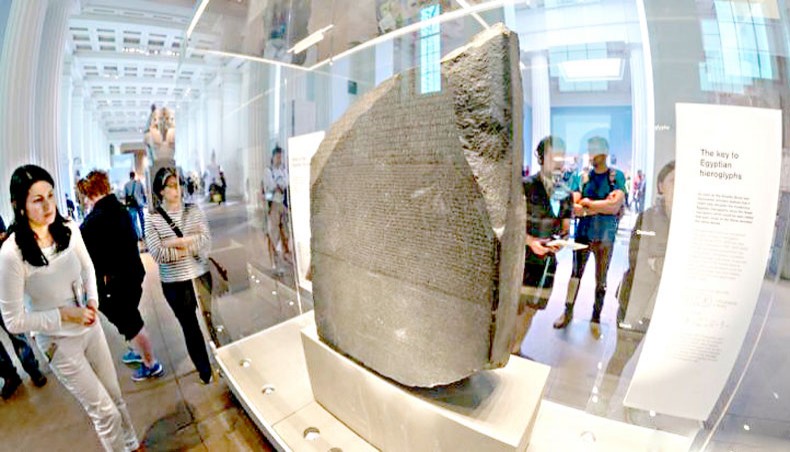
— Qantara
To celebrate the bicentenary of the deciphering of the Rosetta Stone, the British Museum is running an exhibition entitled 'Hieroglyphs: unlocking ancient Egypt' until February 2023, writes Shady Lewis Botros
THE great event — the bicentenary of the deciphering of the Rosetta Stone — which both London and Paris are vying to celebrate, opened the door to a competition between the Louvre and the British Museum. The former has already held its own exhibition, which focused on Jean-François Champollion, the man credited with deciphering the Egyptian hieroglyphs, and his historical role in this groundbreaking discovery.
The British Museum boasts the cachet of actually having the Rosetta Stone in its collection. It views the stone as its most significant historical object for the purposes of tourist promotion. But this exhibition has other concerns beyond mere self-congratulation.
Rosetta Stone: stolen not once, but twice
THE renowned stone remains a spoil of war, in the true sense of the word. Indeed, it is booty from a double plunder. The French stole it from the ruins of a Mamluk castle in the city of Rashid (or Rosetta) during Napoleon's campaign against Egypt. The British fleet stationed off the shores of Alexandria then seized it after a decisive naval battle and protracted negotiations, during which the French threatened to burn or smash the stone.
Contemporary museum studies are dominated as much by the colonial guilt complex as by the same moral restlessness that goes with anthropology. After all, both are colonial sciences in origin, aimed at accumulating knowledge about 'other' peoples. Museum studies are about their past, anthropology about their present.
Sorting, indexing, classifying and preserving were the tools used in the flood of violence and subjugation as western supremacy took root. The pursuit of knowledge accorded the pretext for subsequent entitlements. Anthropology found easy salvation, reviewing and re-writing its literature to root out racism, framing its future within the boundaries of cultural relativism, and enlarging its fields of study to include Western societies as well. Thus, anthropology came to see everyone equally.
For museums, however, their hopes to atone for past sins faced obstacles. The acquisitions — or booty — in the galleries of museums are as much evidence of the initial crime as they are an indication of on-going violations. To give them up and send them back from where they came would mean the closure of museums.
Dealing with colonial guilt complex
THE current British exhibition on hieroglyphs deals with this guilt complex by deploying a number of strategies. Firstly, by acknowledgement, which is why one corner of the museum is devoted to acknowledging the act of seizure as the basis for ownership of the stone. The military context of the discovery is chronicled, including details of the object's passage from hand to hand, under fire.
At the same time, the curators are at odds with the enlightened individualistic narrative, which attributes the great discovery to the genius of one person; this narrative explains things away as being based on reason and liberation from traditions and superstitions in favour of modern means of knowledge.
While acknowledging the central role of Champollion in decoding the ancient Egyptian language, the exhibition presents a more complex history. It is not one-directional, but rather encompasses dozens of names and secondary dates in the effort to decipher the hieroglyphs, including Muslim writers, merchants, travellers, forgers, thieves, sorcerers and European soldiers from the Middle Ages, the Renaissance and beyond. They all played a major role in laying the foundations for this breakthrough, alongside a number of researchers from among Champollion's contemporaries and his predecessors.
Voices of 'indigenous' people
SINCE none of the above is enough to atone for colonial guilt, the curators infuse the exhibition with local elements and the voices of the 'indigenous' people. For example, the first gallery presents a brief overview of Rashid (Rosetta), to which the stone is attributed, with contemporary pictures of the town and its inhabitants. The inscriptions beside the objects in the collection are interspersed with quotations by professors of archaeology and Egyptology at Egyptian universities.
Among the objects on display are ancient Arabic books that include tables of the pharaonic alphabet, as well as drafts of the first hieroglyphic-Arabic dictionary, compiled by the first Egyptian to manage the Antiquities Authority.
In the last section of the exhibition, recordings of Coptic hymns from the Orthodox liturgy can be heard in the background. The inscription contains the name of the cantor and a description of the role of the Coptic language and clergy in the success of Champollion's mission.
Attempt to broaden Eurocentric focus
THE most perplexing aspect of the exhibition comes in the form of cards that are set out next to the exhibits. They contain pictures of children from schools in Rashid, with their answers to questions about the meaning of certain ancient Egyptian symbols: 'This looks like a helicopter', 'This is festive cake or the sun' and 'This is a beetle.'
While this effort to broaden the Eurocentric focus lays bare a critical approach and a potential for revisionism, it remains largely decorative. For example, quotes by Egyptian university professors add little, as they are only the briefest of comments or footnotes about Champollion. No doubt they were lifted from Western sources.
The pictures of smiling school children and their light-hearted comments add a lighter tone to the exhibition, and they are used effectively to provide a break from the deluge of information that accompanies each item in the collection. Alas, they inadvertently end up — alongside many of the exhibits — underlining the position of the 'locals' in the hierarchy of knowledge and value, exactly as it used to be in past times.
Qantara.de, December 22.
-- Sent from my Linux system.
Egypt Mummies Did Not Have Brains Pulled Out by Nose: Expert Who Tried
It's a myth that ancient Egyptians pulled mummy brains out by the nose — they likely scrambled them instead, says an expert who tried it
Experiments suggest that they likely used a much more effective method, albeit one that's more unpleasant, said Stephen Buckley, an expert studying mummification.
Buckley, an archaeologist and analytical chemist at the University of York, told Insider he did experiments on sheep to test ways in which the brain could be removed.
The work formed part of a 2008 History Channel documentary "Mummy Forensics" taking inspiration from a 1969 academic paper by British Egyptologist Filce Leek.
He found that digging out the brain in chunks was not very easy.
"'Hooking it out in pieces is not particularly efficient/successful," he told Insider in an email.
It could be "slowly removed as small parts of the brain adhered to the metal hook through repeated insertions and removals", he said. But, even better "liquifying the brain makes the removal of it fairly straightforward."
"If you whisk the brain with a hook for about 20 minutes, the brain liquidizes and you can just pour it out," Buckley said in a later interview.
"It's not very nice, but that's a much more effective way of removing the brain."
There are some times when the brains were left in, Buckley said.
"Particularly with the earlier, still quite well-preserved royal mummies, they actually left the brain in place in situ, so you didn't have to remove them," he said.
Egyptians at that time would not have known about microbes, but they definitely understood that removing organs had a profound effect slowing the body's decay.
If they could afford it, Egyptians would always have their guts, lungs, and other internal organs removed and treated to preserve them. In some cases they were put in jars, in others they were placed back in the body.
The brain, however, could be left in the body to mummify inside the skull during the embalming process.
For instance, Pharaoh Thutmose I, Queen Tiye, the main wife of pharaoh Amenhotep III, and Pharaoh Amenhotep I were all found with brain tissue still in place.
-- Sent from my Linux system.
Sunday, December 25, 2022
UCC to repatriate ancient Egyptian objects | University College Cork
UCC to repatriate ancient Egyptian objects

University College Cork (UCC) announces today that it is to repatriate a number of objects in its Heritage Collection to the Egyptian State.
The items in question include mummified human remains, a sarcophagus, a set of four Canopic jars, and items of cartonnage (coverings) dating variously from 100AD to about 975BCE. UCC came into possession of the mummified remains by donation in 1928.
UCC has been in an ongoing collaboration with the Egyptian Embassy, the Department of Foreign Affairs, and the National Museum of Ireland and a plan for the safe preparation and transport of the objects has been developed. It is envisaged that the transfer will take place in 2023.
Speaking on the impending transfer, UCC President Professor John O'Halloran said:
"UCC takes seriously the care of its heritage assets and is pleased to be in a position to present these objects to the Egyptian State. I wish to thank all stakeholders for their assistance in developing a programme for the return of these items, particularly His Excellency Mohamed Sarwat Selim, Egyptian Ambassador to Ireland, Minister Simon Coveney and his officials at the Department of Foreign Affairs, and the National Museum of Ireland."
His Excellency Mohamed Sarwat Selim, Egyptian Ambassador to Ireland, said:
"I wish to emphasize the utmost importance of the ongoing cooperation between University College Cork and the Egyptian State through the Embassy of the Arab Republic of Egypt in Dublin, in seeking the return of the Egyptian mummy and the set of the canopic jars to our homeland.
"I wish to thank all stakeholders for their work, particularly, UCC President Professor John O'Halloran, the National Museum of Ireland and the Egyptian officials at the Ministry of Tourism and Antiquities for their continuous efforts to ensure the completion of this endeavour successfully in 2023."
Minister for Foreign Affairs, Mr Simon Coveney TD said:
"I am delighted that my Department, and in particular our Embassy in Cairo, has been able to facilitate and support this important project led by University College Cork and President John O'Halloran and including an ambitious creative programme by one of our finest artists on the global stage, Dorothy Cross."
The objects' journey home to Egypt is to be documented in 'Kinship' a creative project led by artist Dr Dorothy Cross, and creative producer Mary Hickson.
Speaking on their project, Dr Cross said:
"The essence of Kinship is the return of a mummified body of an Egyptian man from Ireland to Cairo, mirroring the tragic displacement and migration of thousands of people from their homelands today - linking one man through time. Kinship will memorialise his journey through film, writing and visual art."
-- Sent from my Linux system.
Thursday, December 22, 2022
Fwd: Ancient Art Council - Spring 2023 Lectures - Please save the dates - Happy Holidays...
... and a JOYOUS 2023
Ramses the Great and the Gold of the Pharaohs
7 more weeks @ de Young Museum
==========
ANCIENT ART COUNCIL
Supporting Antiquities at the Fine Arts Museums of San Francisco
Legion of Honor | de Young Museum
________________________________________________________________
Saturday, 21 January 2023, 2:00–3:30 pm (PST)
Dr. Rita Freed
John F. Cogan and Mary L. Cornille Chair Emerita
Art of Ancient Egypt, Nubia, and the Near East
Museum of Fine Arts, Boston
Ramses the Great through Nubian Eyes
The Battle of Kadesh looms large in our perception of Ramses the Great—and,
to judge from his many representations of it, in his perception of himself.
But how did he represent himself in Nubia? And what was life like in Nubia
under Ramses' rule? These and other questions will be addressed in this lecture.
Dr. David Silverman
University of Pennsylvania
Ramses the Great: How "great" was he?
Saturday, 4 February 2023, 2:00–3:30 pm (PST)
Dr. Rita Lucarelli
University of California, Berkeley
The ancient Egyptian imagery of the Beyond in the Ramesside Period
Lectures supported by Elizabeth Moyer, PhD, and Michael Powanda, PhD;
Bernard and Jane von Bothmer, in honor of the late Bernard V. Bothmer; and Sheila Wishek
Sunday, 5 February 2023, 2:00–3:30 pm (PST)
Dr. Aidan Dodson
University of Bristol
Tutankhamun: from Zero to Hero
Lecture cosponsored by the American Research Center in Egypt (ARCE), the Northern California ARCE chapter,
and the Ancient Art Council of the FIne Arts Museums of San Francisco
==========
Program is free and open to the public.
Seating is limited and unassigned.
The Gunn Theater will open its doors at 1:30 pm.
________________________________________________________________
Exhibition at the de Young Museum
Ramses the Great and the Gold of the Pharaohs
through 12 February 2023
Ticket information: https://tickets.famsf.org/orders/283/calendar
Covid-19 guidance: https://deyoung.famsf.org/covid-updates
________________________________________________________________
We are grateful for your support of Antiquities at the FAMSF. Keep well and keep safe.
Become an AAC member or make a donation—and help us grow ancient art at the Museums.
Crocodile heads found in tombs of Ancient Egyptian nobles - HeritageDaily - Archaeology News
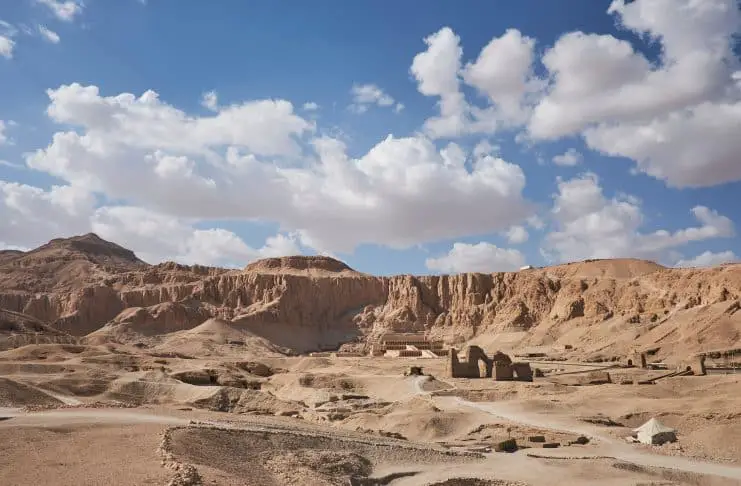
Crocodile heads found in tombs of Ancient Egyptian nobles
Polish archaeologists excavating in the Theban Necropolis have found crocodile heads in the tombs of two Egyptian nobles.
The Theban Necropolis is a region on the west bank of the Nile, opposite Thebes (Luxor) in Upper Egypt. It was used for ritual burials for much of the Pharaonic period, especially during the New Kingdom.
Archaeologists from the Centre of Mediterranean Archaeology at the University of Warsaw were excavating at the Necropolis of el-Asassif, just to the west of the causeway that leads to the Mortuary Temple of Hatshepsut.
The team have been studying two tombs in the necropolis since 2013, one belonging to "Cheti", an important official during the reign of Pharaoh, Nebhepetra Mentuhotep II (reigned 2055-2002 BC), and the second from an anonymous, but high-status member who served at the royal court.
Within both tombs, archaeologists recently discovered the heads of nine crocodiles wrapped in fabric, which were neither mummified nor given any special treatments for preservation.
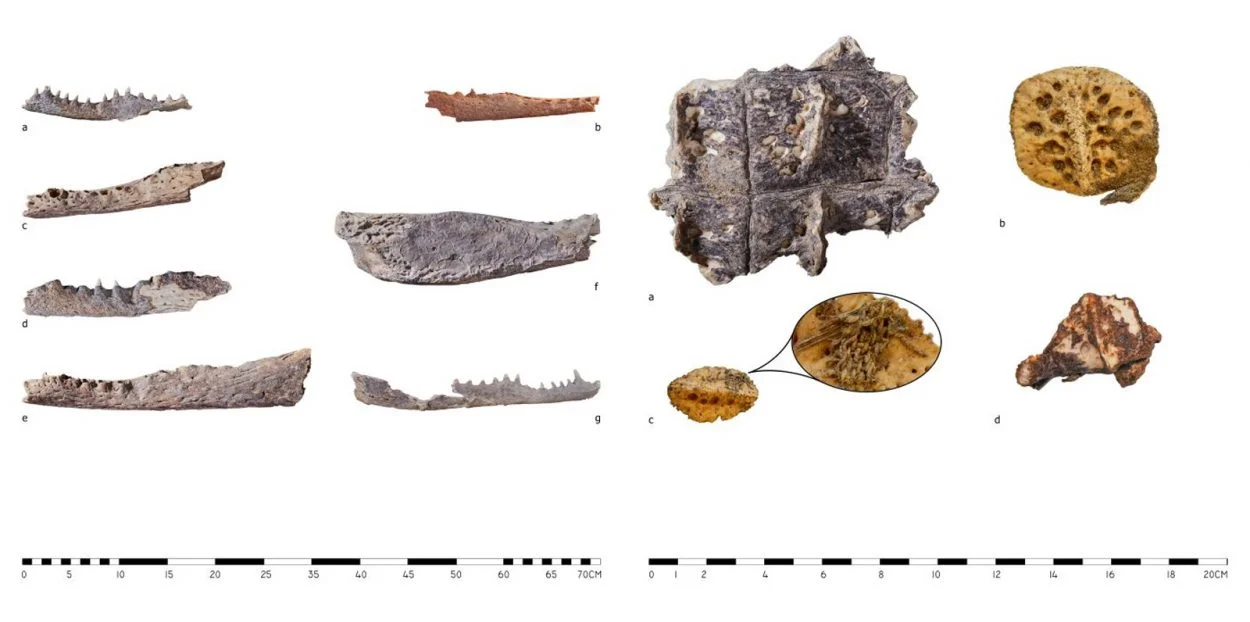
The skulls belonged members of the Crocodylus niloticus species, a large crocodilian native to freshwater habitats in Africa. Only skull fragments and mandibles have survived, likely due to previous excavations a century ago by Herbert Winlock, from the Metropolitan Museum of Art, as researchers of the time paid very little attention to animal remains and dumped them in a pile.
In Ancient Egypt, Crocodiles were the object of worship in the form of the god, Sobek. Sobek is associated with the Nile crocodile or the West African crocodile and is represented either in a true crocodilian form, or as a human with a crocodile head.
Sobek was also associated with pharaonic power, fertility, and military prowess, but served additionally as a protective deity with apotropaic qualities, invoked especially for protection against the dangers presented by the Nile.
Header Image – Necropolis of el-Asassif – Image Credit : Shutterstock
-- Sent from my Linux system.
